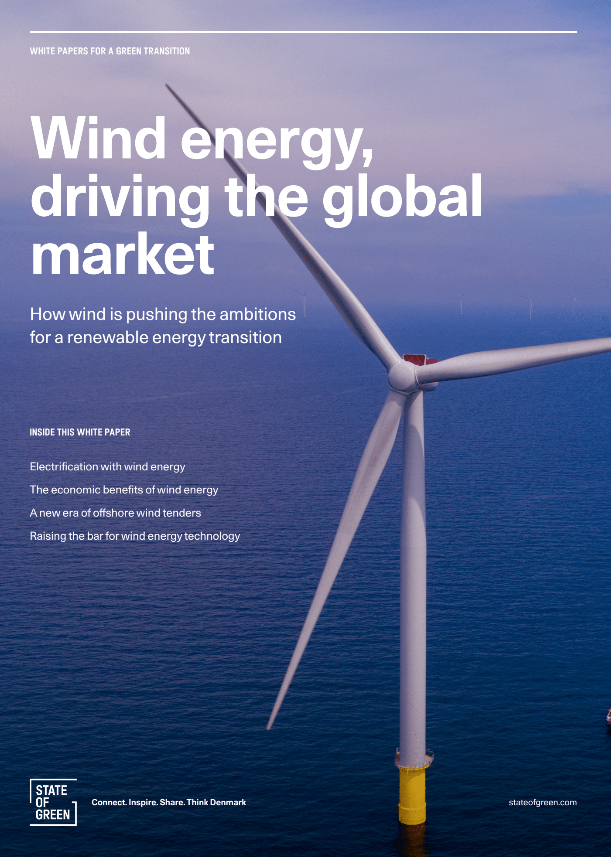Download our publication on wind energy today
This article is part of our publication ‘Wind energy’.
Download nowPerspective
Wind energy


Denmark has almost 50 years of experience in transitioning its energy system from black to green. Over these five decades, Denmark has shown how to sustain economic growth and high living standards, while reducing fossil fuel dependency and mitigating climate change. This is called the Danish Energy Model. The backbone is a political framework characterised by an ambitious, long-term outlook and broad political support. The experience now serves as a catalyst for other countries with whom Denmark seeks to optimise the value of their energy system based on the Danish Energy Model.
By sharing lessons learned, Denmark aims to push the global green transition and support foreign governments to leapfrog their transition towards low-carbon energy sectors. Today, the Danish Energy Agency cooperates bilaterally with 19 emerging and developed economies. In addition, Denmark has a number of short-term country collaborations including The Danish Energy Transition Initiative. These count Germany, Mexico, the Netherlands, Ukraine, Kenya, Poland and United Kingdom, where wind power is not part of the program. Specific offshore wind collaboration is set up with relevant authorities in China, India, Japan, South Korea, France, Turkey, the United States and Vietnam. On onshore wind power, the Danish Energy Agency collaborates with Egypt, Ethiopia, Indonesia and South Africa. Combined, the countries represent more than 60 per cent of global CO2 emissions.
The focus of the government-to-government cooperation is to assist local authorities and institutions in the green transition of their energy systems, while maintaining stable economic growth. Based on Danish knowhow, the partnerships revolve around:
In addition, the Danish TSO, Energinet, holds vast experience in ensuring a record-high energy security. It works as a close partner in many of the country partnerships. Danish embassies in partner countries also play a crucial coordinating role.
By supporting a shift towards more sustainable energy systems, renewable energy installations grow and new markets for green solutions mature. This supports the market development for wind power and energy efficient solutions and reduces the barriers for green investors.

This article is part of our publication ‘Wind energy’.
Download now